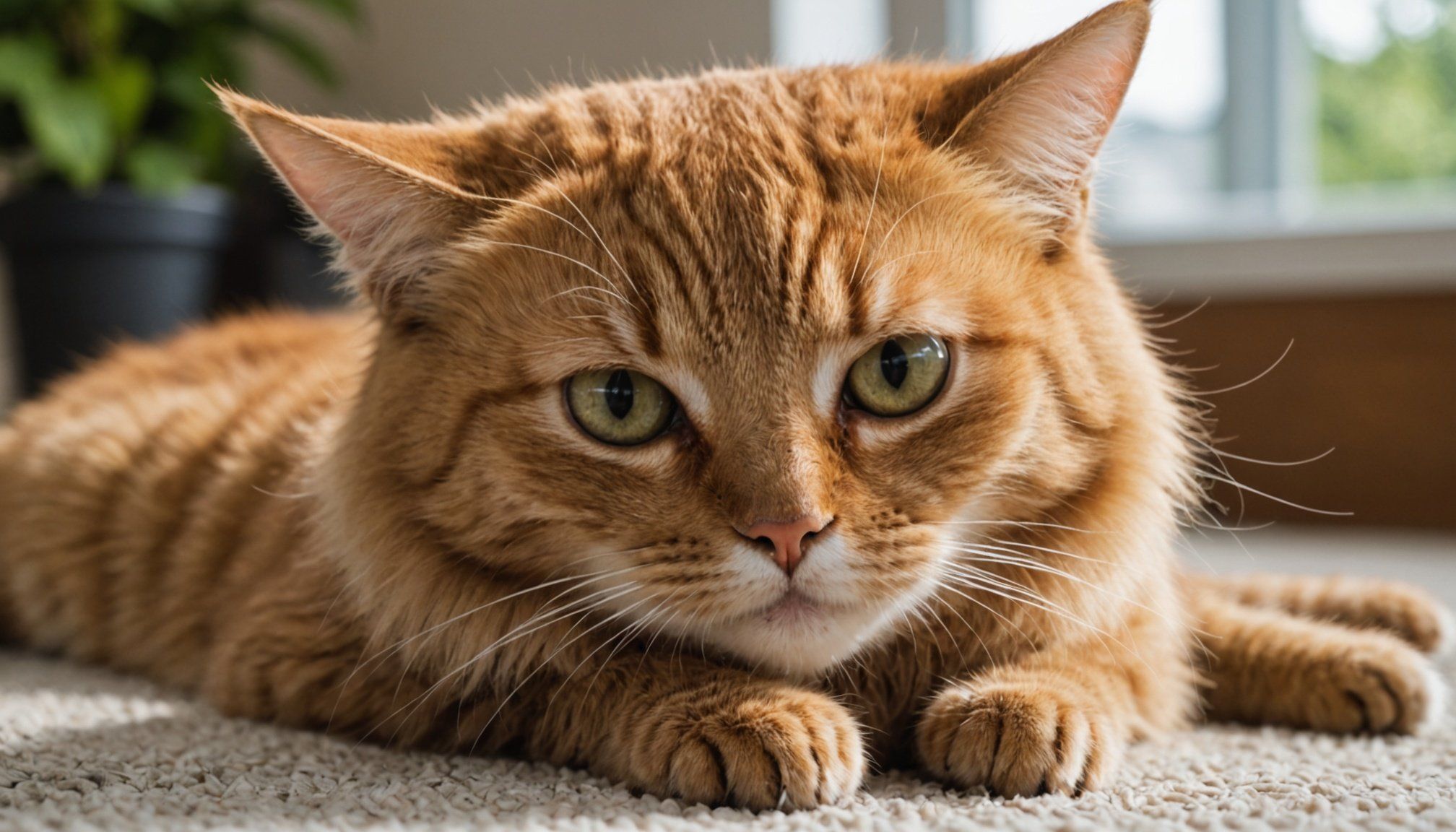Importance of Claw Health for Indoor Cats
Understanding claw health is essential for maintaining the overall well-being of indoor cats. Claws are more than just tools for catching prey; they significantly impact a cat’s physical health and mobility. Indoor living often contributes to insufficient natural wear and tear, as these cats lack access to various rough surfaces found outside.
Indoor cats are prone to claw-related health issues such as overgrowth due to limited opportunities for natural scratching. Overgrown claws can lead to discomfort, pain, or even infections if they curl into the foot pad. Regular attention to claw health is vital to prevent such problems and ensure the cat’s comfort and safety.
Topic to read : Essential tips for easing your cat”s anxiety at the vet: stress-reducing strategies you need to know
One common mistake is assuming that indoor cats do not require the same level of claw maintenance as their outdoor counterparts. However, limited wear from soft indoor surfaces necessitates regular checking and maintenance. Keeping an eye on claw health can prevent long-term issues and support overall cat wellness.
Regular trimming and providing suitable scratching surfaces help maintain healthy claws for indoor cats. Aim to incorporate these practices into your cat care routine to facilitate optimal cat well-being and mitigate the risk of claw-related health problems.
Also to see : Bringing home a new dog: key strategies for harmonizing with your feline family
Nail Trimming Techniques
Nail trimming is a crucial part of cat grooming that ensures comfort and health. Proper techniques can prevent discomfort or injury while maintaining claw health.
When to Trim
The ideal frequency for nail trimming can depend on your cat’s activity and environment. Indoor cats may require more frequent trims since they lack natural surfaces to wear down their claws. Regular checks—approximately every 1-2 weeks—help determine if a trim is necessary.
How to Trim Safely
Safety in trimming is paramount. Begin by gently holding your cat and pressing the paw to extend the claw. Trim only the sharp tip, avoiding the quick, which is the pink area containing nerves and blood vessels. If unsure, consult a vet for a demonstration.
Using the Right Tools
Selecting the appropriate tool is essential for effective trimming. Cat-specific nail clippers, such as scissor-style or guillotine-style, provide control and precision. High-quality clippers are sharp and comfortable to use, reducing stress for both you and your cat.
Consistent trimming supports overall claw wellness and can significantly enhance your indoor cat’s quality of life. Emphasizing the importance of proper tools and techniques fosters not just better grooming practices, but also a deeper understanding of your pet’s needs.
Appropriate Scratching Surfaces
Providing suitable scratching surfaces plays a pivotal role in maintaining healthy claws and overall well-being for indoor cats. A variety of scratching posts and surfaces can cater to your cat’s natural instincts, preventing claw overgrowth and promoting physical activity.
Types of Scratching Posts:
- Vertical posts: Allow cats to stretch and scratch simultaneously, engaging their muscles.
- Horizontal pads: Suitable for older or less agile cats, providing a comfortable angle.
- Inclined boards: Combine benefits of both vertical and horizontal posts, offering versatility.
Strategically place these surfaces in areas your cat frequents, such as near resting places or entryways, to naturally encourage regular use. Introducing cat furniture like trees or towers can also integrate scratching behavior seamlessly into your cat’s daily life.
Encouraging Scratching Behaviors:
Entice your cat by using catnip, toys, or treats near scratching posts. Praise and positive reinforcement further motivate them to use the designated surfaces.
Positioning scratching areas in visually stimulating spots or in spaces where cats can observe their environment can make them more appealing. Regularly rotate textures and styles to maintain your cat’s interest, ensuring sustained use and engagement.
Grooming Tools for Claw Care
Effective claw maintenance relies on using suitable grooming tools crafted for cat care. These tools are pivotal in ensuring both the ease of the grooming process and the health of your cat’s claws.
Recommended Products
High-quality cat nail trimmers are essential. Look for ergonomic, sharp clippers to make precise cuts with minimal stress on your pet. Brands such as the Scissor-style or Guillotine-style clippers are highly recommended.
DIY Grooming Tools
For those who enjoy a hands-on approach, DIY grooming tools can be crafted using common household items. Emery boards can double as nail files, and non-slip mats can become improvised scratching surfaces, integrating seamlessly into your cat’s living space.
Maintaining Tools
Regular maintenance of your cat care tools extends their lifespan and ensures continued effectiveness. Clean clippers with alcohol after each use to disinfect them and keep the blades sharp. Store them in dry, safe spaces where they won’t rust or dull.
Properly maintained and selected grooming tools can significantly enhance the claw maintenance process, contributing to the comfort and health of indoor cats, and building a harmonious grooming routine.
Keeping Claws Clean
Maintaining clean claws is an integral part of ensuring overall hygiene and health in cat care. Keeping your indoor cat’s claws clean helps prevent infections and maintains their wellness.
Importance of Hygiene
Healthy and clean claws protect cats from dirt and bacteria. Dirty claws might harbour germs, potentially leading to infections or irritation. Regular cleaning promotes not only claw health but also contributes to your cat’s comfort and quality of life.
Effective Cleaning Techniques
To clean your cat’s claws, start by gently handling your pet’s paw. Use a damp cloth to wipe away debris and dirt tucked under the claws. For stubborn dirt, a gentle scrub with a soft brush can help. Avoid using harsh chemicals, as these can irritate your cat’s sensitive skin.
Frequency and Signs of Concern
Inspect your cat’s claws weekly for encroaching dirt or grime. Regular monitoring will help you notice if cleaning is necessary. Be alert to signs like persistent dirt under the claws or any foul odour, as these could indicate the need for a more thorough cleaning or a vet’s attention.
Signs of Claw-Related Issues
Identifying claw issues early can enhance your cat’s overall health and wellness. Proactive health monitoring is crucial in maintaining a healthy life for your feline friend.
Common Problems
Indoor cats often encounter issues like overgrown claws, which can lead to embedding in the paw pad, causing pain or infections. Splitting or cracking can arise from dry conditions or insufficient claw maintenance.
Observational Tips
Monitor your cat’s behaviour closely. Limping, excessive licking of paws, or reluctance to play may indicate claw issues. Regular checks of your cat’s paws can catch early signs of problems, ensuring prompt care.
When to Visit the Vet
Seek professional advice if you observe persistent symptoms like swelling, discharge, or odour from the paw. These could indicate severe issues needing veterinary attention. Routine vet visits can provide reassurance and early intervention.
Effective health monitoring involves both keen observation and prompt action when necessary. Being aware of your cat’s normal behaviour and physical condition aids in identifying deviations that could signal underlying health concerns. Regular observation remains a cornerstone in preventing severe claw-related complications.
Expert Tips for Healthy Claws
In maintaining claw health, expert advice can be invaluable. Veterinarians emphasize that regular maintenance routines are crucial for the overall wellness of indoor cats. Tailoring these routines to suit different breeds and life stages ensures your pet receives the best possible care.
Veterinarians recommend that pet owners establish a structured maintenance schedule. For kittens, start early with gentle acclimatization to grooming, paving the way for a lifetime of healthy claws. Adult cats may require more frequent attention, especially if they show signs of claw wear and tear.
To ensure effective maintenance, experts advise observing your cat’s individual needs. Long-haired breeds or those with a history of claw issues may need more frequent checks. Regular scheduling, such as weekly inspections and monthly trims, can help in preventing overgrowth and other issues.
Customizing care routines is equally important. For example, older cats might benefit from softer scratching surfaces to reduce the risk of splitting, while energetic breeds may need more robust scratching posts to maintain healthy claws. Adapting care strategies ensures that indoor cats enjoy optimal wellness throughout their lives, regardless of their age or breed.







